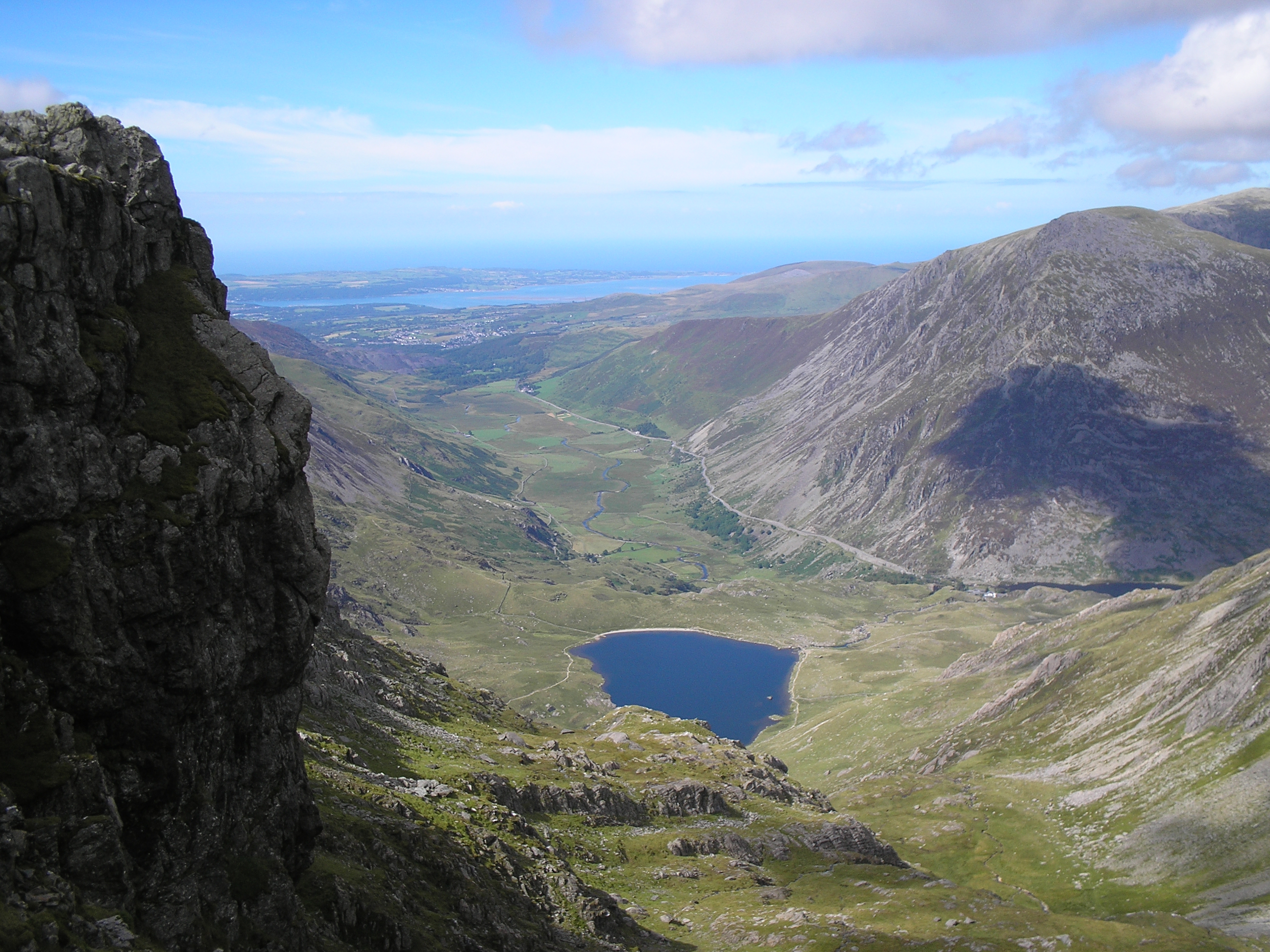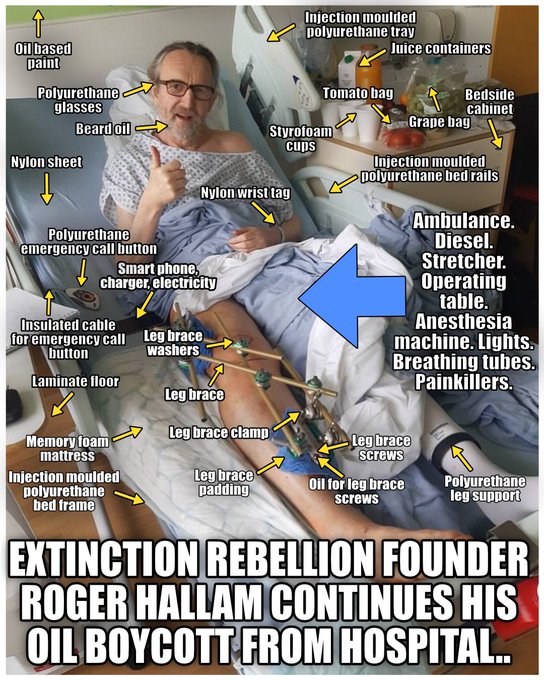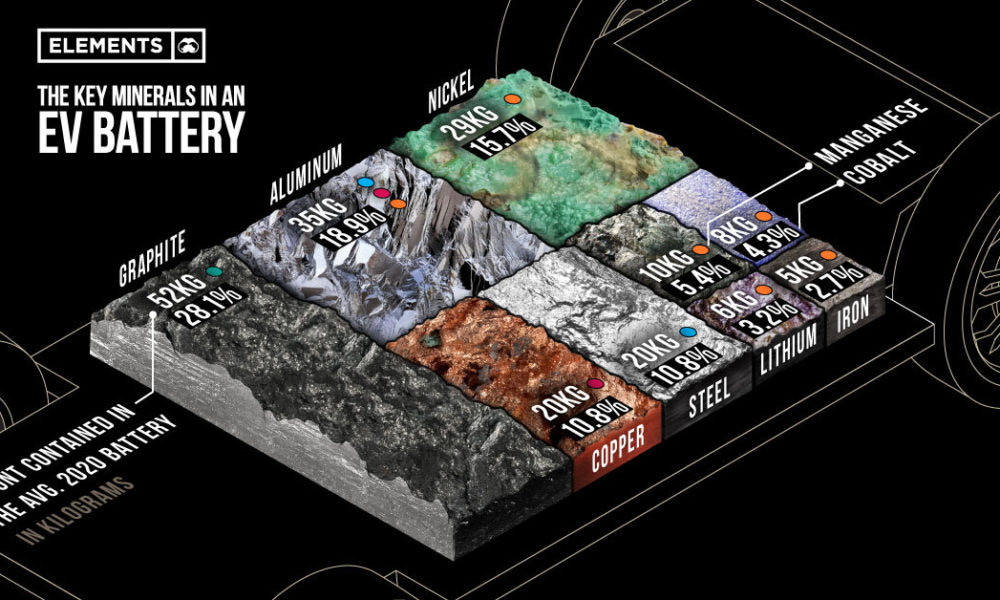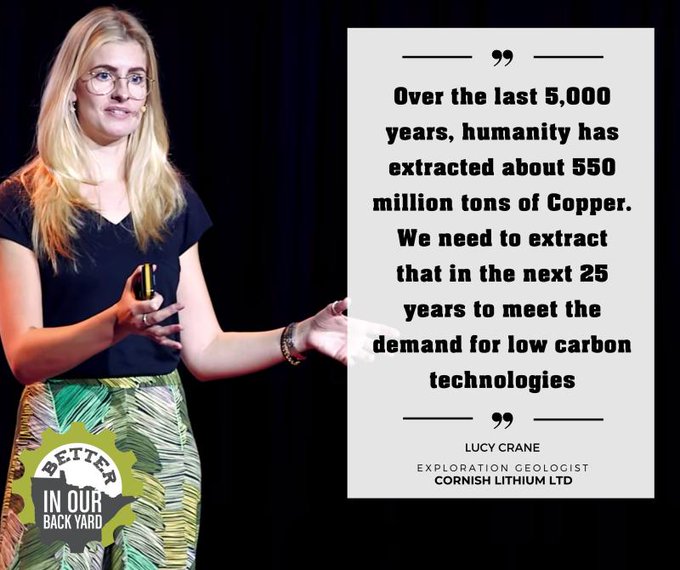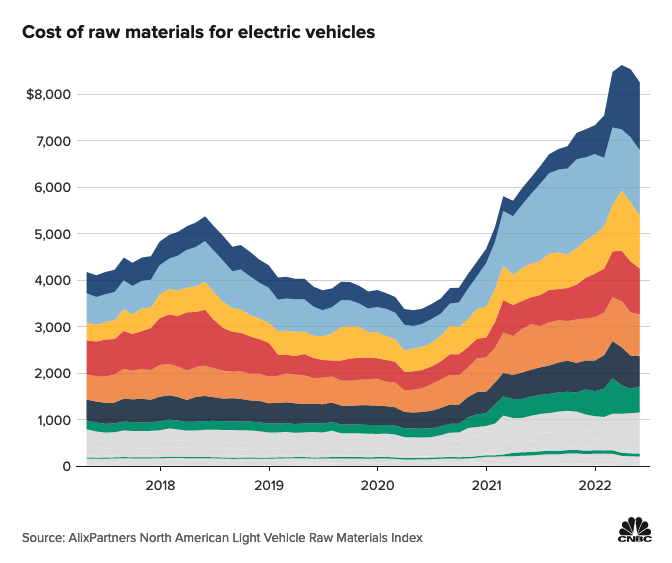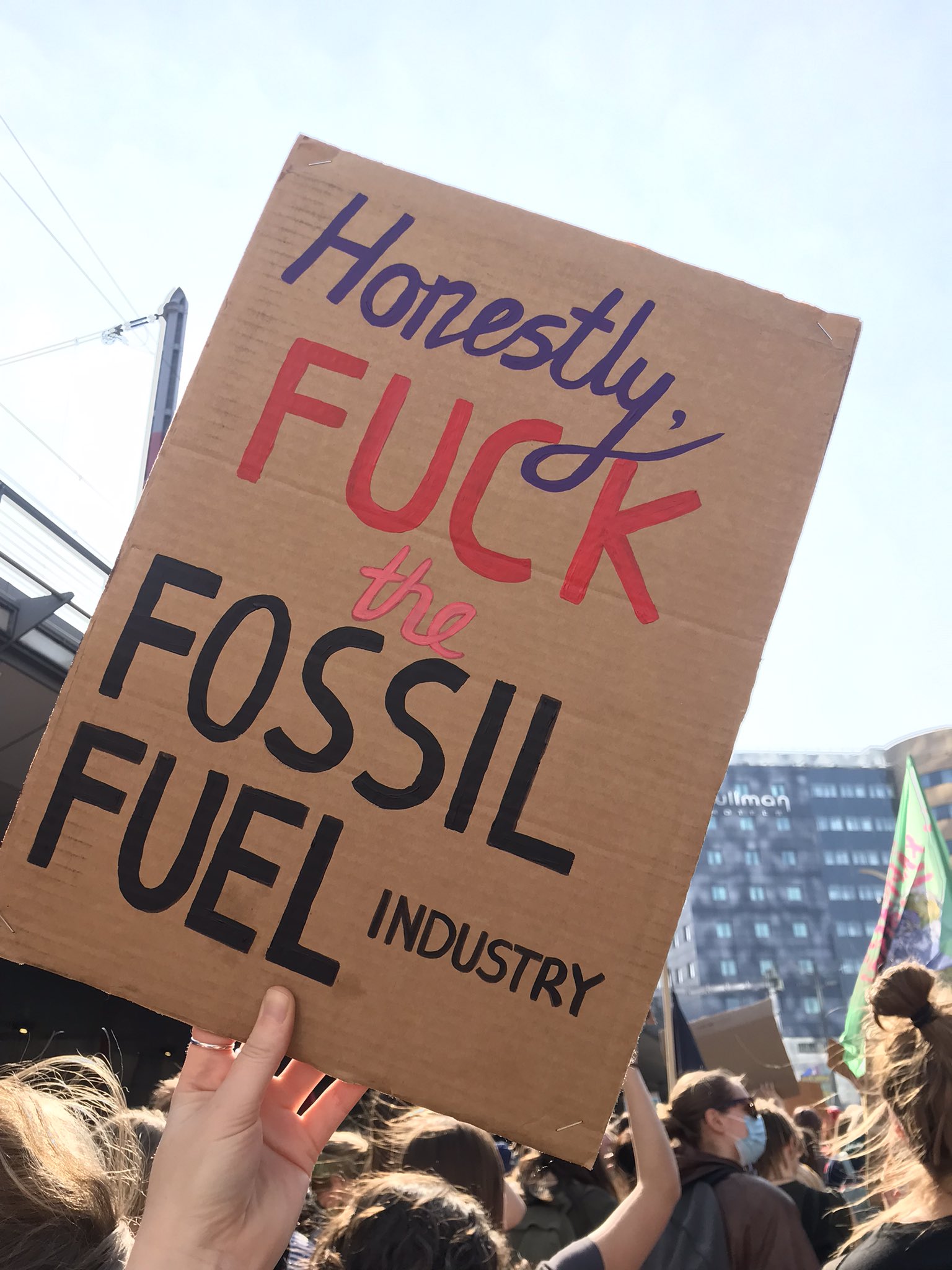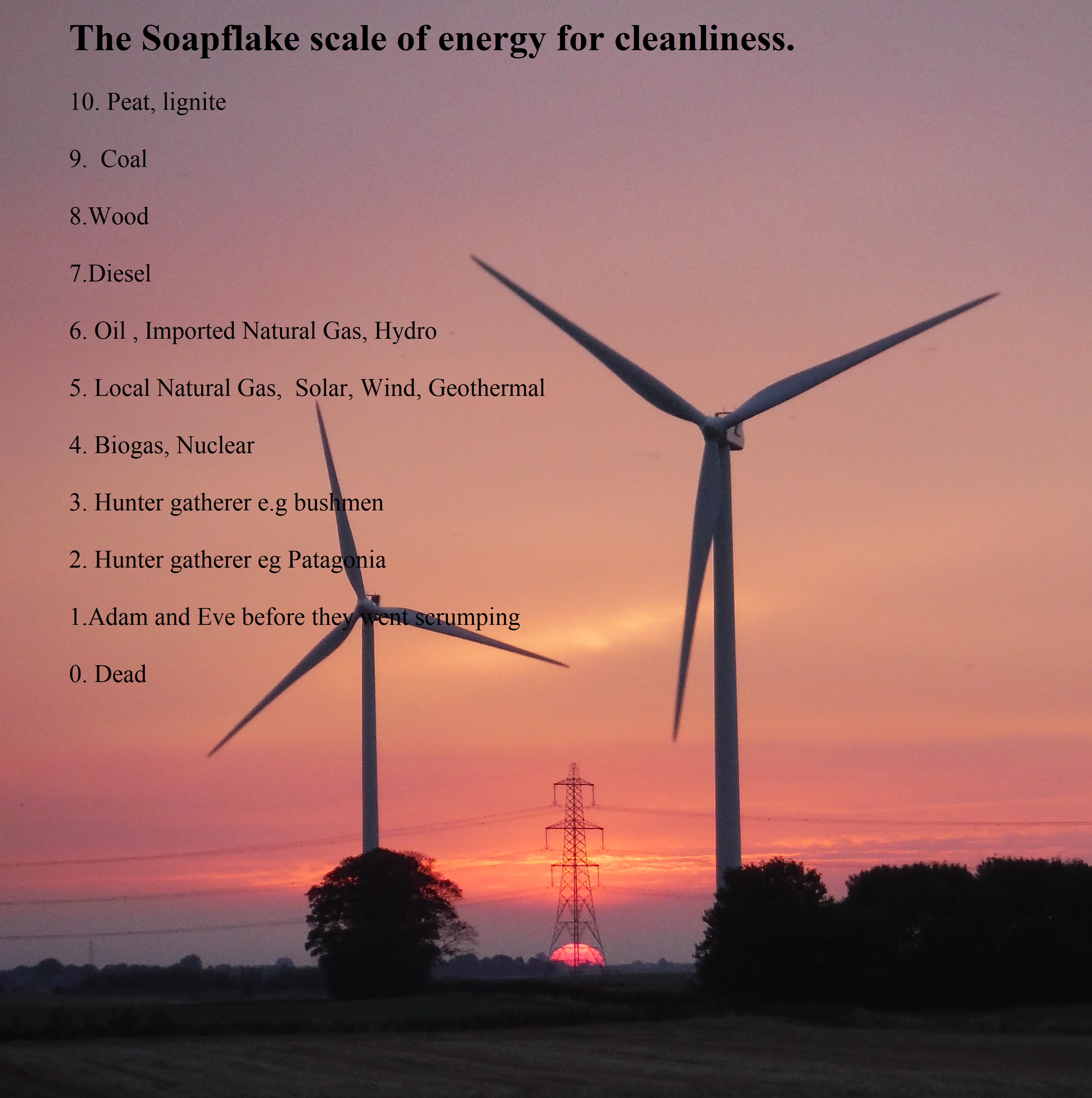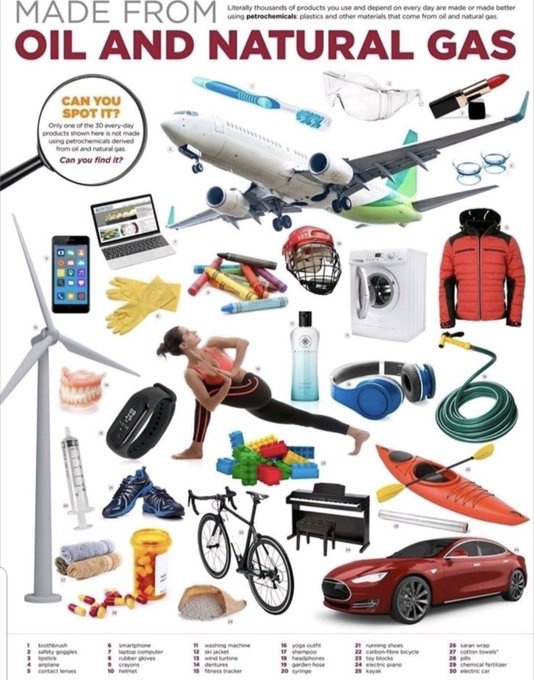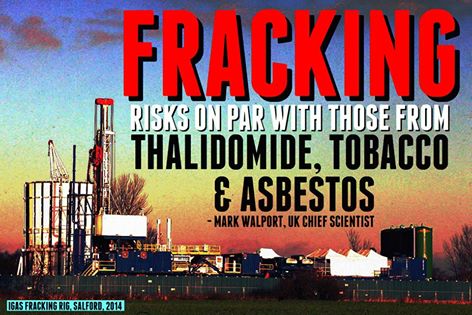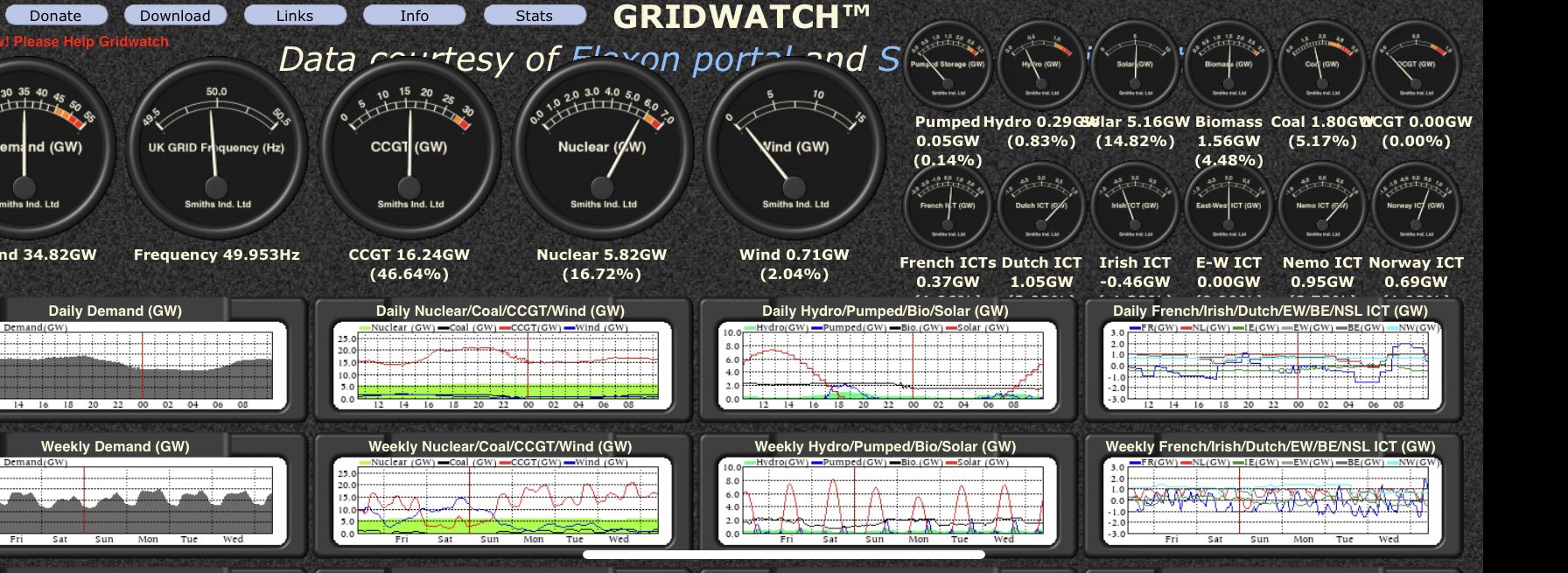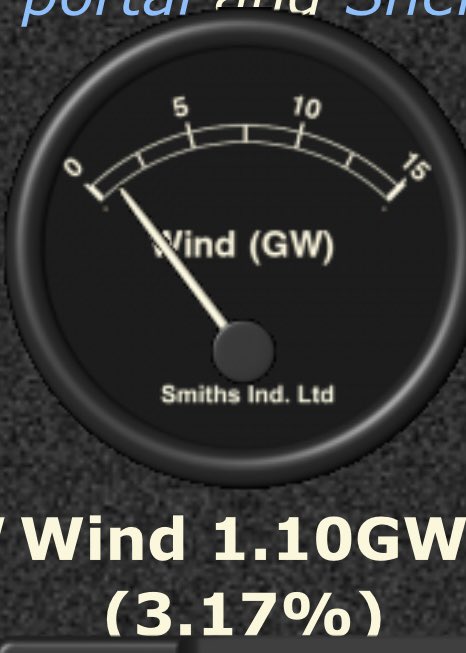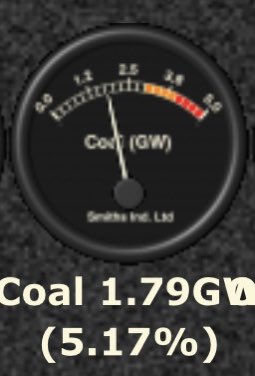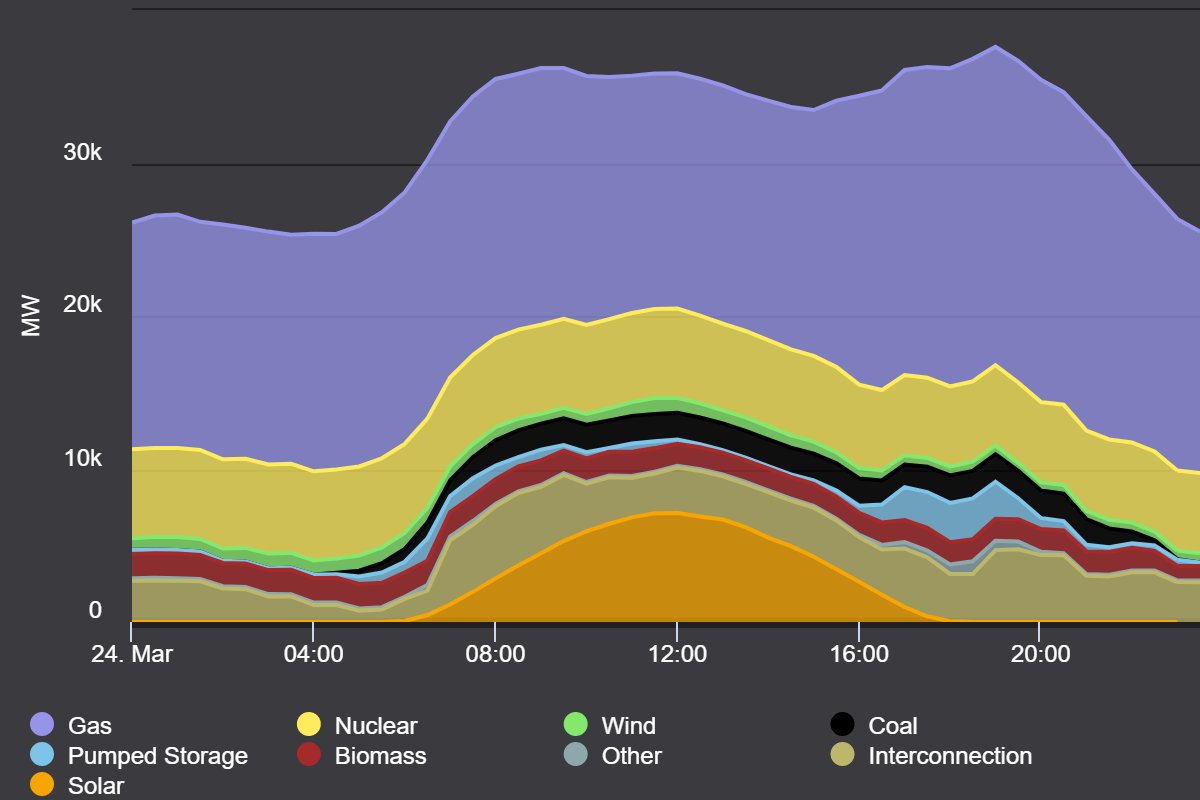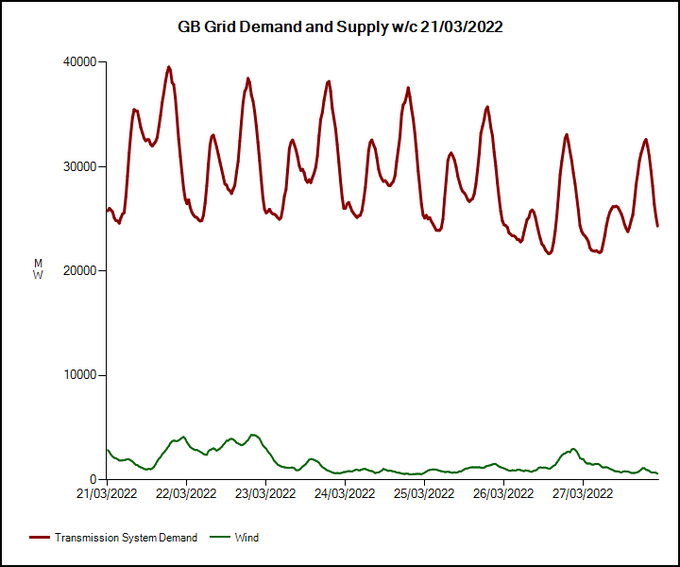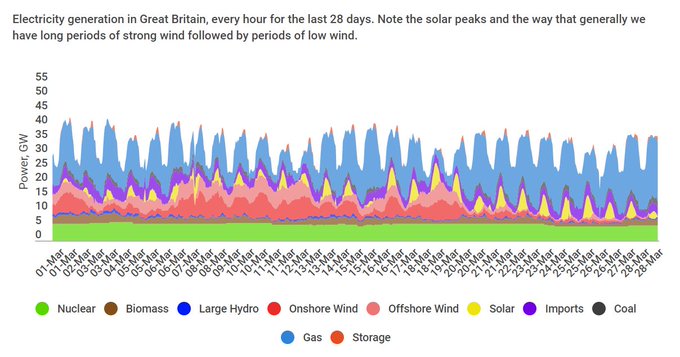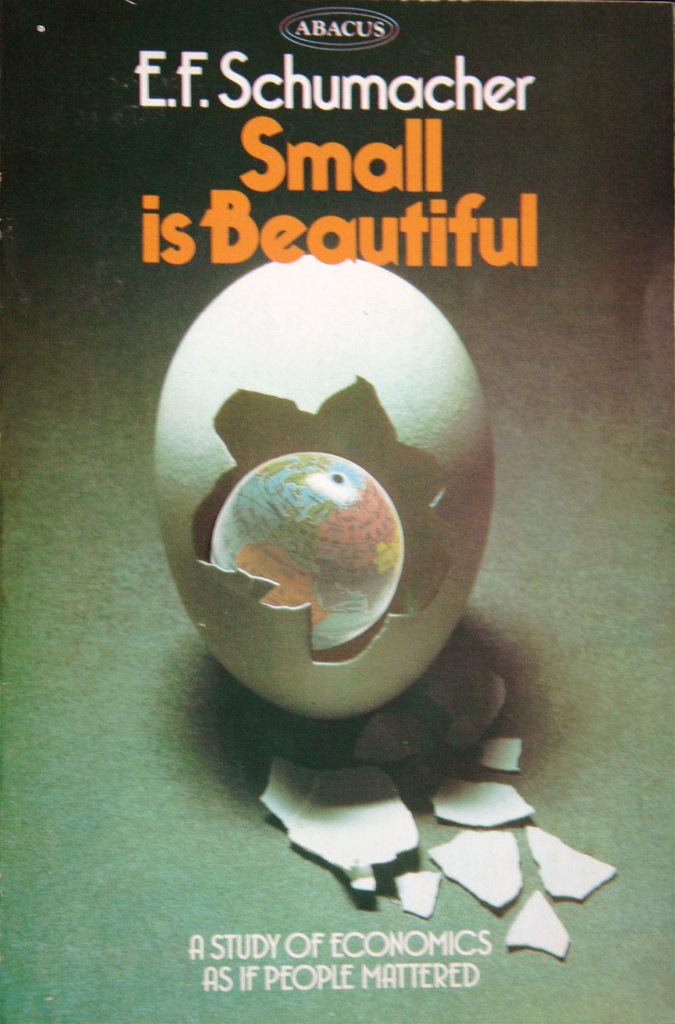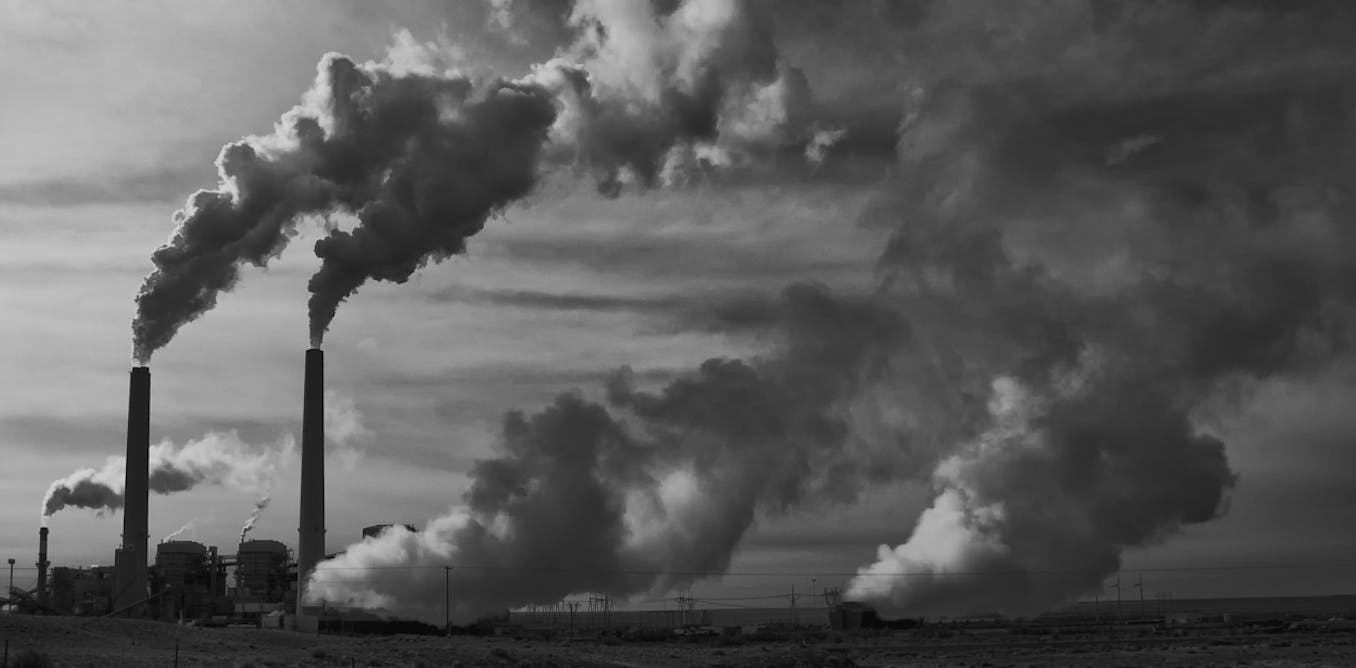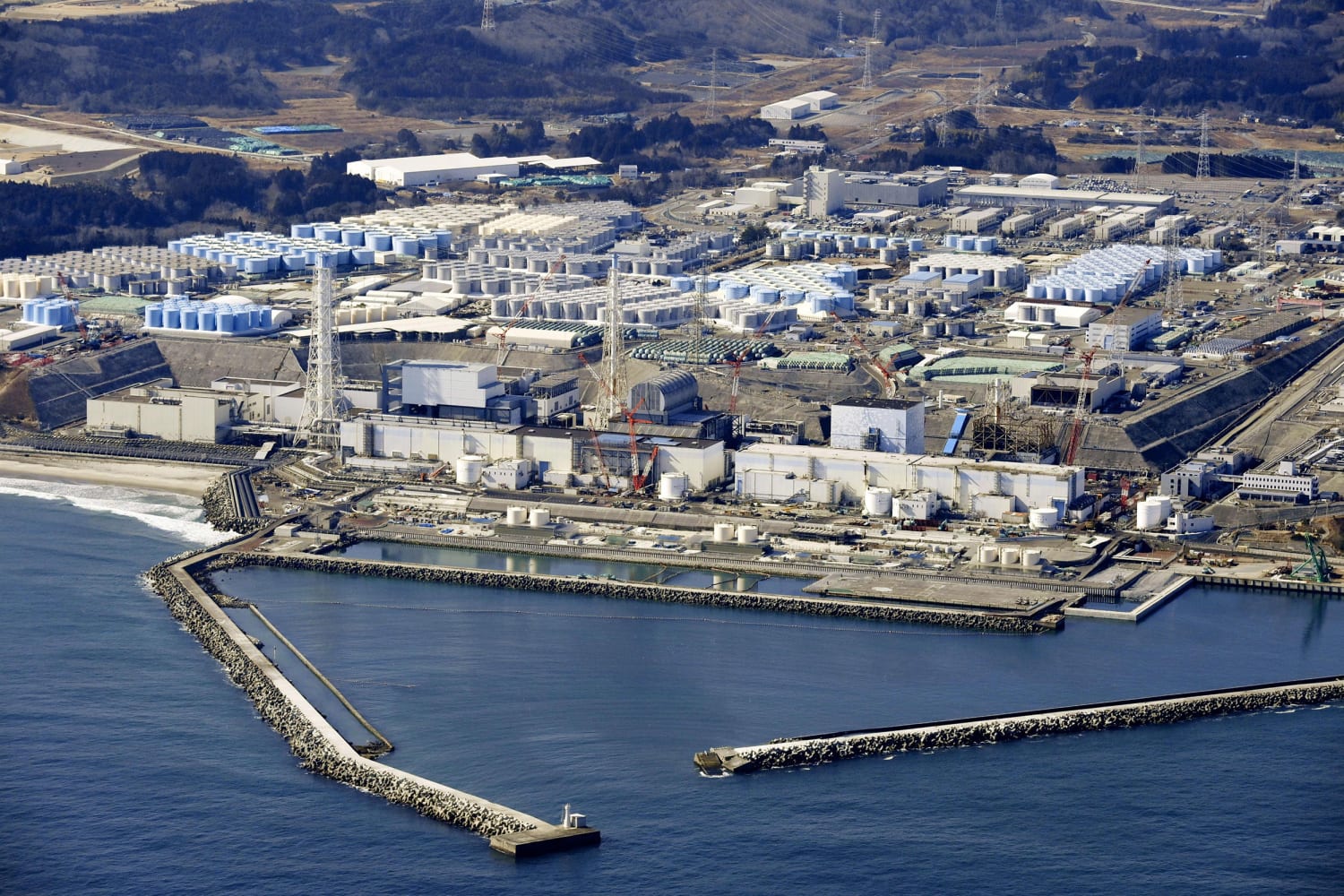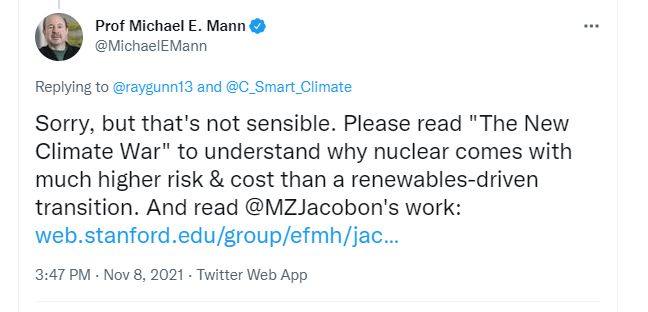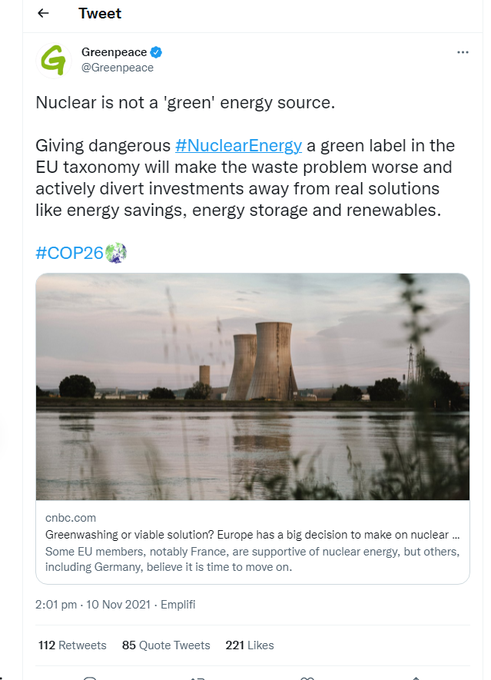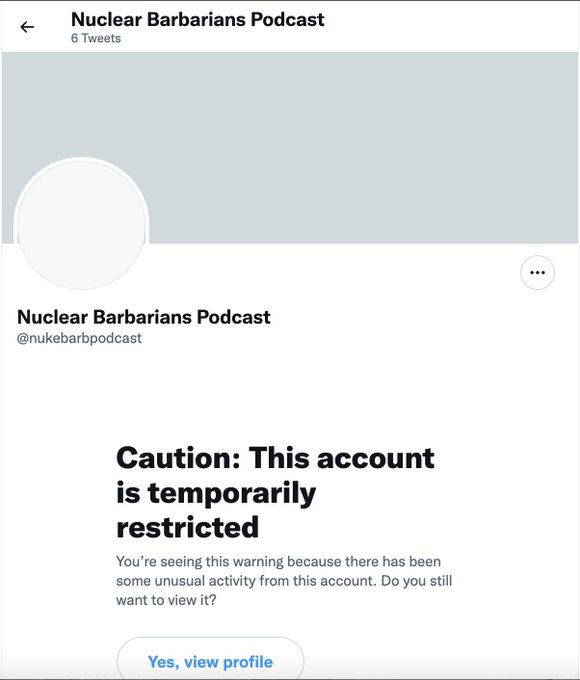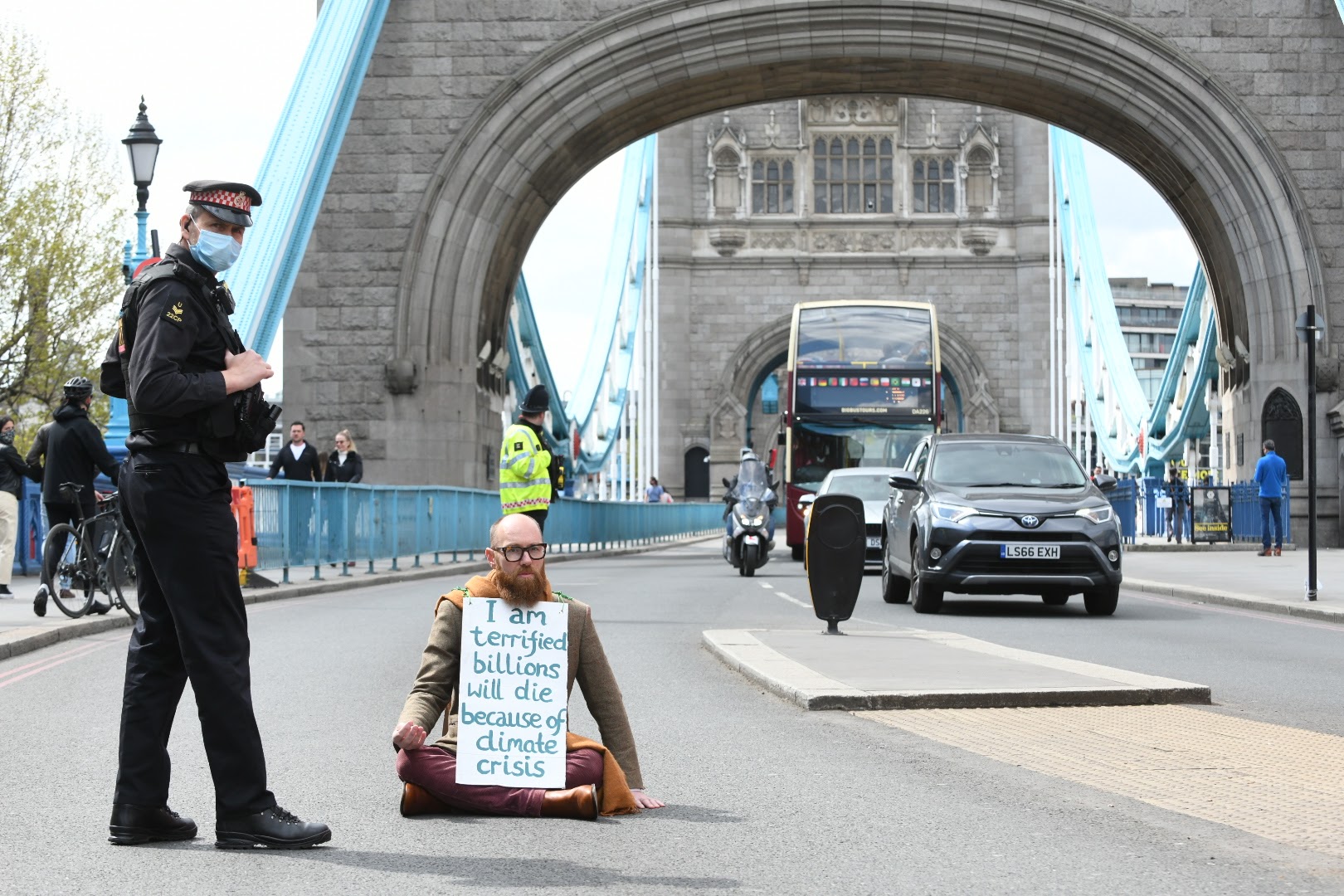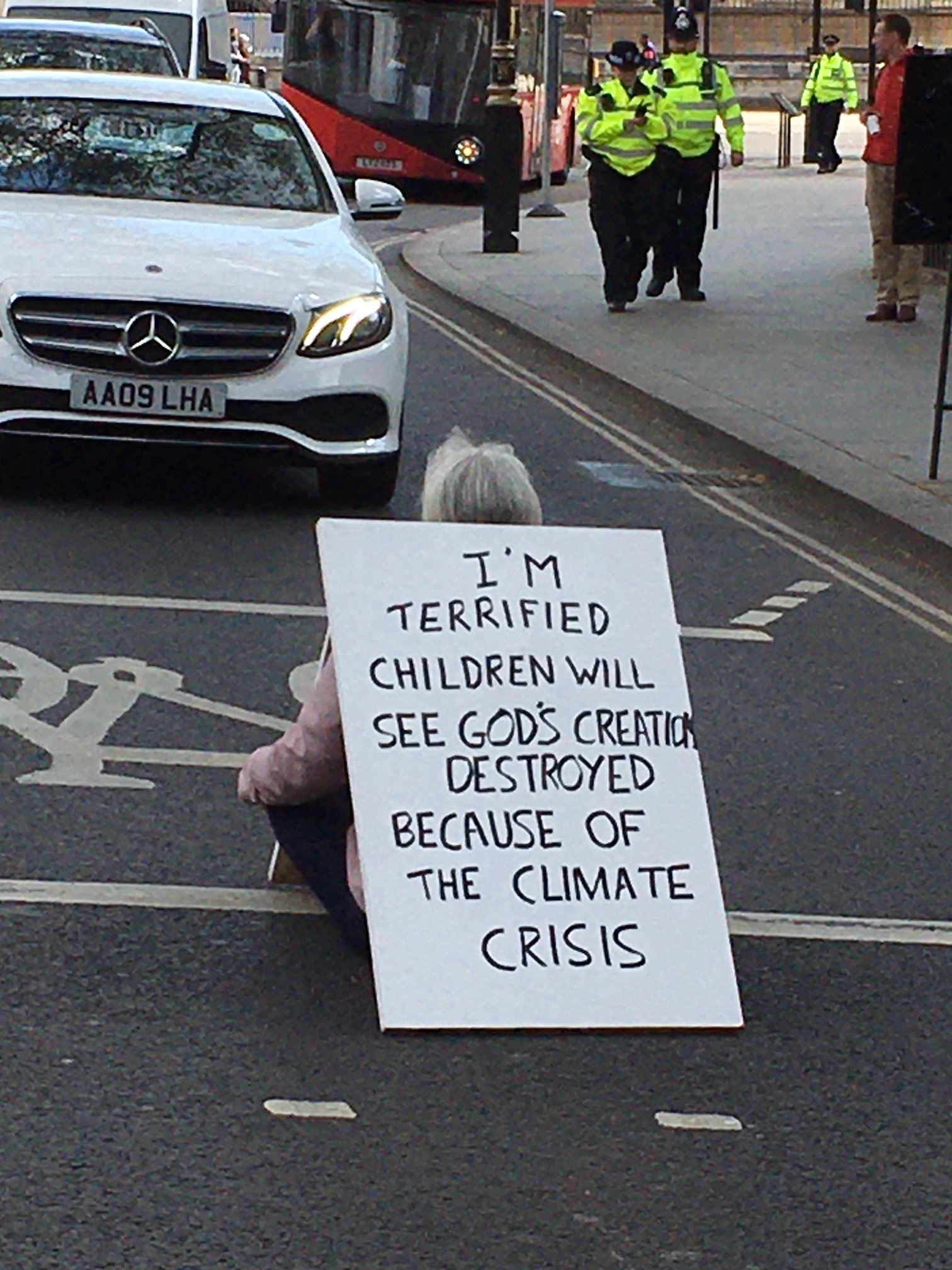It is hard to believe now that until recently the churches said nothing about environmental concerns, but today it seems that if you are not opposed to fossil fuels and don’t protest with Just Stop Oil and Extinction Rebellion then you are not a proper Christian.
The General Synod wants the Church of England to reach Net Zero by 2030 and one serious solution is to use battery-heated cushions in church. That will make the pew the hot seat!
Twice before, groups of church leaders – with Rowan Williams heading the signatories, have written to the Prime Minister demanding no new oil in or on British land or sea.
On 5th October 2023 400+ Christian Leaders Called on Prime Minister to Stop Rosebank Oil Field. This was an open letter organised by Operation Noah which has pursued a policy of seeking to curtail fossil fuels for over a decade, which came to the for in its Bright Now campaign of 2013. That was very one-sided and also included a rather inaccurate presentation of fracking! Incidentally, or not, I cannot find out who is funding Operation Noah, or what qualifications they have to pronounce on energy issues.
Rosebank is a relatively small oil and gas field to the west of the Shetland Islands, which would produce a moderate amount of oil and gas. As the Gaurdian says;
Rosebank could produce 69,000 barrels of oil a day – about 8% of the UK’s projected daily output between 2026 and 2030 – and could also produce 44m cubic feet of gas every day [ed. a few per cent of UK consumption], according to Equinor.
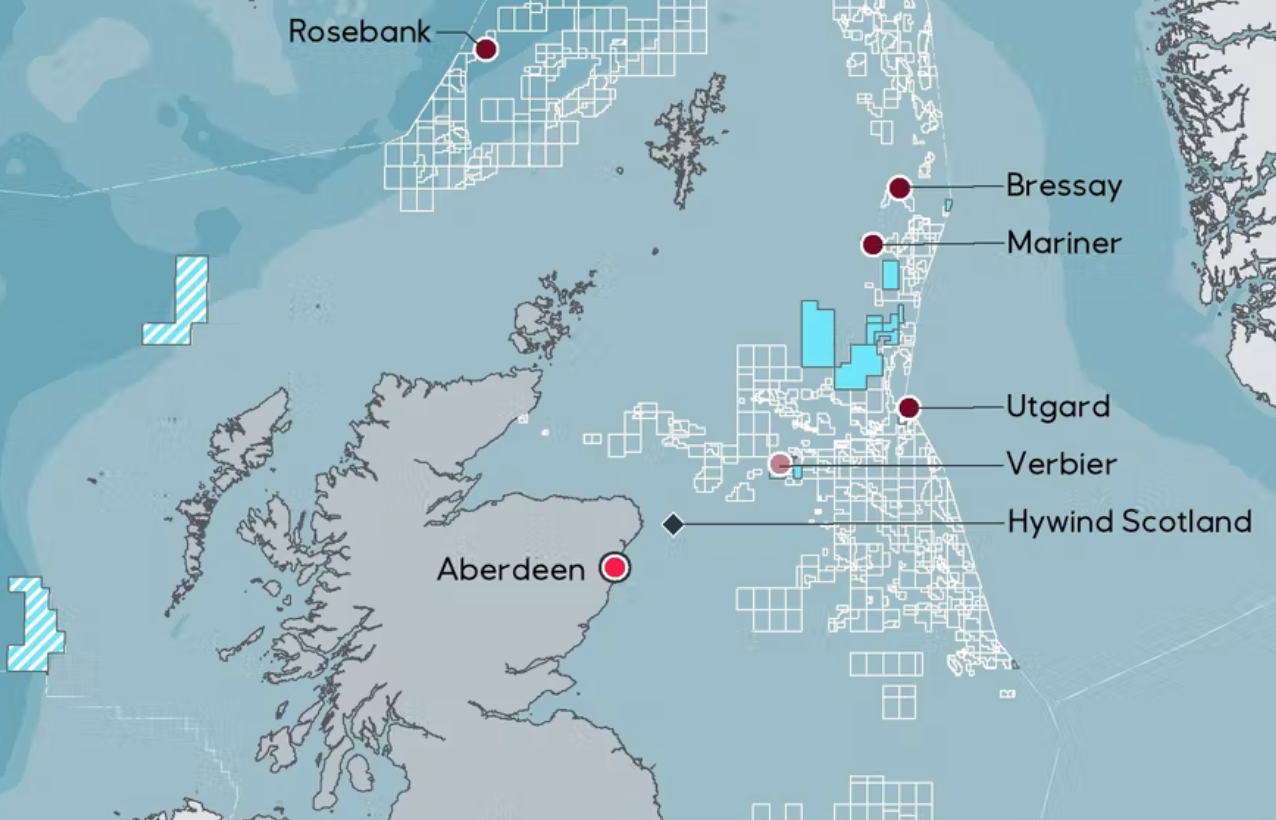
The letter had a simple focus; – Just Stop Oil at Rosebank. But, and this is absolutely vital. But, and a big but, they do not consider three basic necessities of life
Heating, eating and meeting
or if you prefer – living in a warm home, having enough food and being able to travel to meet whether for friends , family or work – and be able to afford it. All three use prodigious amounts of energy and if too costly pushes people into poverty. That has happened in the last few years over the cost of gas for heating and also petrol for transport.
PRESS RELEASE: 400+ Christian Leaders Call on Prime Minister to Stop Rosebank Oil Field
https://docs.google.com/document/d/1kvyjiS75fY6eLSg1jKrzmQVrnFYzevNcGNiOt42rp7w/edit
Here is the open letter and you can find all those who signed on the url above.
Dear Prime Minister,
As Christian leaders from around the UK, we call on you to stop the Rosebank oil field, which will not lower energy bills, provide energy security, uphold our obligations to care for our global neighbours or create sustainable jobs fit for the green energy future we need. 1
Your government will know that both the International Energy Agency and the Intergovernmental Panel on Climate Change have been clear that we cannot afford to burn all the oil and gas from existing fossil fuel developments, let alone from new ones, and still limit global heating to 1.5°C. 2
We have already seen the incredible damage that human-driven climate change has caused around the world; sadly, these impacts will only accelerate as we burn more oil, gas and coal. 3
Rosebank could produce more than 300m barrels of oil, which, when burned, will emit the same amount of CO2 as the annual emissions of the world’s 28 lowest-income countries combined – countries disproportionately impacted by the climate crisis with limited ability to adapt. 4
Yet according to the UN, every dollar invested in renewables creates three times more jobs than if that same amount were invested in fossil fuels.
Why then does your government refuse to commit to supporting a just transition – one that prioritises workers and their communities, and recognises that the fossil fuel era is rapidly coming to a close 5– in favour of an industry that will cost UK taxpayers hundreds of millions of pounds, will produce oil that even its Norwegian owners acknowledge will be sold on the international market at international prices, and will ultimately contribute to climate chaos? 6
We already have most of the solutions we need to transition to 100% renewable energy.7 What we lack is the political will – and the moral conviction to do what is best for people and the planet. As Christian leaders from around the UK, we do not take a partisan view on Rosebank, we take a moral view. It’s time to show international and moral leadership – and stop Rosebank. 8
The content of the letter is similar to previous letters to the Prime Minister and give a summary of the dominant narrative on fossils fuels within the churches today. I say “dominant” but could say “exclusive” as alternative voices are all but ignored in today’s churches. It is also very closely aligned with various green NGOs eg Greenpeace and Friends of the Earth. The whole tenor is to disinvest and stop using fossil fuels as soon as possible and it is not surprising that some of the better known signatories Are involved in Extinction Rebellion and have been involved in protests like stopping commuters getting to work by train or occupying business premises.
On the surface it seems a reasonable appeal but the letter does not acknowledge that fossil fuels will be used for several decades, owing to a time lag of introducing alternatives. Neither does it acknowledge that petroleum is used for a vast number of products – and not only plastic bags! These include artificial fertiliser and many everyday and specialist products. It also overlooks the whole question of metals and minerals needed for a transition to electrification which requires astronomical amounts of various metals like copper.
The letter is written with strong moral force but suffers from the unrealistic idealism of so much environmental activism of today. They seem to assume that we can rapidly get rid of fossil fuels and do not see that any transition from them will take decades and not years.
The range of opinion over fossil fuels and Net Zero, whether in 2030 or 2050, is vast. Often those who have the most extreme views shout the loudest, whether those who want Net Zero last week or those who think there is no problem and the more fuel we burn the better. I reject both!
It may seem most unreasonable to criticise such a morally charged letter by 400 well-meaning church leaders, but I do so as it has several deficiencies caused by an inadequate grasp of the technicalities of delivering the vast amount of energy needed in our world today and the mineral resources needed to do it.
What I have done is to number each section and make what I think a pertinent comments and point out serious weaknesses. The letter seems unaware how much the electrical grid needs expanding and that this cannot occur overnight. The expansion will be due to the number of EVs and the transfer of heating from gas to electricity. That would mean that transmission lines would have to carry several times the present amount. That in itself is a massive undertaking. It is is also unaware of the problem of sufficient mineral resources, like Copper and other metals, to make that transition.
The letter is totally silent about nuclear energy, which is probably the cleanest and safest of all energy sources and has the least impact on the environment. My statement here goes against the policies of many green NGOs which are implacably opposed to nuclear energy and to GMOs. At best Christian green groups are very iffy to nuclear energy and GMOs, but the latter is another, though related, story.
I get the impression that there hadn’t been very much delving into the issues from every side. I would have thought church leaders would have examined things thoroughly and found out the “other side”, or, at least, taken advice from experts who are conversant with the technology. The letter seems to echo this article.
https://www.stopcambo.org.uk/updates/everything-you-need-to-know-about-the-rosebank-oil-field
And so to my seven points;
1. Rosebank oil field, which will not lower energy bills, provide energy security, uphold our obligations to care for our global neighbours or create sustainable jobs fit for the green energy future we need.
This is the standard criticism of Rosebank and any new petroleum from almost all green groups.
There are mixed views on whether Rosebank would actually lower bills, but in the form of taxes it would boost treasury finances and thus the wealth of each of us. Since the latter was sent Hamas has let violence loose in the Middle East, which may cause energy insecurity, thus a local British source would be of great benefit.
This would give some energy security, which seems more necessary now. Further a local source results in few emissions from transportation and loss in transport (this is especially for gas).
The concern for global neighbours is probably a concern of raised emissions, but in fact using Rosebank would make no difference. Britain would either use Rosebank or import.
I am baffled why sustainable jobs would be excluded, but the word sustainable is overused. Varieties of energy are being developed and pursued – oil, nuclear and renewable. there is a question Renewables are sustainable in light of mineral demands.
2. 1.5 degree limit
The 1.5 deg limit was introduced by the IPCC, and is suggesting temperatures must not rise more than 1.5 deg higher than they were before the Industrial Revolution. That period in the 18th century was in the middle of the Little Ice Age, when temperatures were at their lowest for a thousand years with intervening Mediaeval Warm Period, which began after a sudden climate collapse after 1314. Glaciers were in full retreat in the Mediaeval Warm Period and then in full advance up to about 1850 and have been in retreat since.
Some in the IPCC have tried to smooth out the LIA and MWP and argue the LIA was confined to the Northern Hemisphere and was thus local. In the LIA glaciers surged in the Alps and I found moraines from a little LIA glacier in the Savoie Alpes,and possibly in New Mexico. In fact, moraines give evidence for the furthest extent of glaciation. There were probably small glaciers in Scotland. Glaciers also advanced in the Ruwenzori Mountains bang on the equator, as they did in New Zealand and South America. Yes, it was not confined to the northern hemisphere.
(BTW I worked on Precambrian glaciation in South Africa and then on the discovery of glaciation in North Wales in 1841/2, where I visited many glacial sites, both in the mountains and elsewhere.). Here’s Buckland in 1841 at Rhyd Ddu, below Snowdon. He thought coal was God’s blessing to Britain.
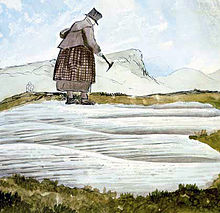
In fact, now many climate scientists reckon the 1.5 deg limit has or will be exceeded and so what is needed is mitigation not limiting the actual temperature. Before anyone concludes I am not concerned, I am, but ditching Rosebank won’t make any difference. Even so the aim must be to reduce fossil fuels, and use every form of mitigation.
Though the IEA wish to see fossil fuels reduced ASAP, they are realists and know that they will be used in 2050 and beyond. They also recognise new sources must be found – especially in regard to unstable source areas.
https://www.iea.org/reports/world-energy-outlook-2022/executive-summary
This diagram from their report shows how fossil fuels are expected to be used until 2050. There is no possibility of an imminent transition, and despite concerns of 1.5 deg they are still needed.
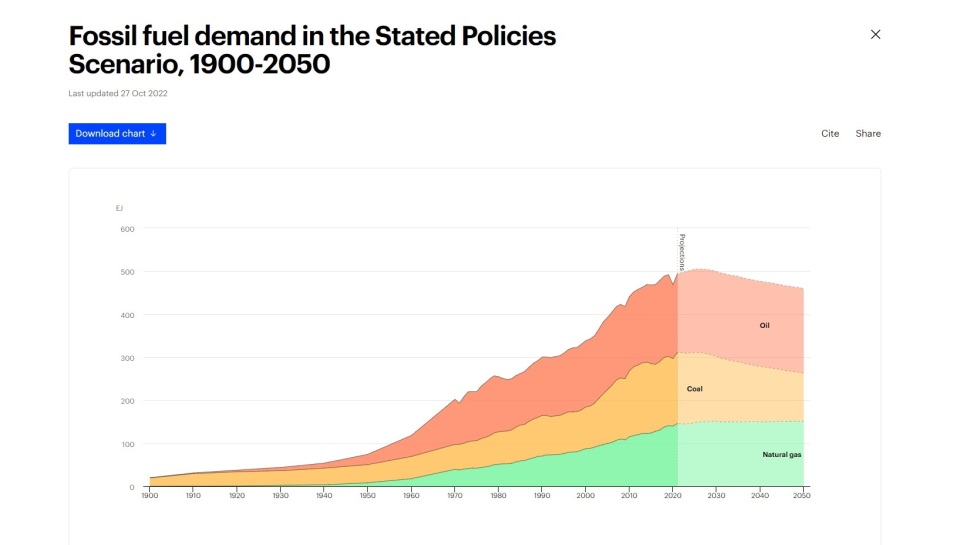
3 Incredible damage
The letter seems to assume all recent disasters eg floods and fires are caused by Climate Change. That is questionable and expert scientists are very reticent on this. It is scaremongering to appeal to climate change whenever there is a flood or wildfire. They have always occurred.
The fact of the matter is that the IPCC has concluded that connections of carbon dioxide emissions and most types of extreme weather are “in a state of high uncertainty, doubt, or incompleteness.” Further decisions may be made by intuition rather than evidence.
https://www.ipcc.ch/site/assets/uploads/2018/02/ipcc_wg3_ar5_chapter2.pdf
A greater consideration of various factors is needed and there are many possible ones apart from Climate Change. Deforestation and human development are major ones, along with streamlining of rivers rather than allowing natural ways of slowing the flow.
In Britain some of the factors are draining moorland peatbogs with loss of CO2
, excess removal of trees (and replacement by non-native trees), some farming practices, and channeling rivers. In recent years there has been sterling work by various rivers trusts. Iconically this can be seen in the re-introduction of beavers, but more mundanely in the work of peat restoration, both in uplands and lowlands, leaky dams, tree-planting and the use of wild horses and rugged cattle, like Belted Galloways. The problems pre-date fossil fuels and is in part due to excess sheep-rearing. The Howgill Fells are just one example, where problems date back to the Vikings!!. This was brought home to me when I reviewed a field guide to the geomorphology of the Howgill Fells;
https://michaelroberts4004.wordpress.com/2021/09/28/the-howgill-fells-sheep-and-geomorphology/
To move to Uganda where I worked for a year. In S W Uganda, close to the Virunga volcanoes, deforestation is running at a rate of 2% p.a. This is mostly for firewood for cooking, but much of BBQ charcoal comes from Africa. Fifty miles to the north in the Ruwenzori at Kilembe Mines, where I worked, there have been several serious floods in recent years, which nearly washed away the bungalows I lived in. These did not occur 50 years ago, but there has been a massive increase of population including on the surrounding steep hillsides which had only a few houses and shambas 50 years ago with no roads. Now there are roads a plenty and lots of building. That and deforestation is a recipe for flooding before Global Warming is invoked as the explain-all.
There are similar stories from elsewhere and warn against simplistic appeals to Global Warming and then to Just Stop Oil.
It is very superficial thinking to put it all down to Climate Change and the burning of fossil fuels and to ignore the massive increase in population, deforestation, re-ordering rivers, loss of wetlands, and unsustainable farming practices. Here one needs to consider each and every one of the causes of flooding and wildfires, first in Britain (because we live here) and then in the rest of the world.
As Philip Fletcher from Church House pointed out a decade ago, we should not see everything through the lens of climate change, as too many within the churches tend to do.
4 Rosebank could produce more than 300m barrels of oil,
That sounds like an incredible amount (and is 13 billion gallons) but it is about the annual usage of oil in Britain, which is 500 million barrels and declining. In other words a years supply. The reference to the 28 lowest income countries is an emotive rather than a reasoned argument.
To be hard-headed that amount will be used in Britain anyway, so opening Rosebank will have little global effect on emissions. In fact, to import petroleum would result in greater emissions due to transport and loss in transit. Somehow that is never considered.
If it is not used immediately by Britain, it will be used in the rest of Europe and thus reduce imports from other parts of the world, which would result in greater emissions due to transporting the oil.
5 the fossil fuel era is rapidly coming to a close
The question is “How rapidly?” Listening to activists it seems to be a few years or even a matter of months. I discuss this on renewables a little further on. Most scenarios recognise that fossil fuels with be with us for decades rather than years, and it is unlikely they will be phased out by 2050. The challenges of Net Zero 2050 are superbly explained in Dieter Helm’s Net Zero; how we stop causing climate change. He rightly sees that the issue is with you and me and not only Big Oil. He notes (pxi) “net zero does not actually mean reducing emissions to zero.’ Net Zero means natural and industrial sequestration must be equal or less than carbon emissions by 2050.
Two main natural sequestrators are restoring peatland and planting trees (but right trees in the right places!). Both are very long term projects as they sequester very little in the early stages. Here is a calculator for trees;
https://naturalresources.wales/media/687190/eng-worksheet-carbon-storage-calculator.pdf
From this I can work out that two rowans of 23 years old I planted in my old vicarage have so far sequestered 30 kg of carbon! I also grow rowans from seed and have given away thirty in the last few years – with more in the offing. So far they have sequestered 3 kg of carbon between them, but that will increase rapidly each year. In about 30 years time each will have sequestered some 150 kg. This is a bit of a tangent but is a reminder how glacially slow natural sequestration is, but also how long-lived it is.
To get back to oil, we cannot get rid of oil until we have replacement sources of energy – see below. To illustrate the size of the problem about 80% of UK energy comes from fossil fuels and that will not reduce as rapidly as the letter seems to require. A very useful twitter account for any following energy in Britain is British Electricity Tracker (by Andrew Crossland) @myGridGB. He records how electricity is being produced at various times of the day – and gives it without comment. At 6pm on 31/10/23 it was;
Gas 38.0% Biomass 6.6% Coal 4.0% Wind 17.7% Solar 0.0% Hydro 2.1% Nuclear 13.2% Imports 13.5% Other 1.7% Storage 3.2%
Generation 36GW Carbon intensity 255 gCO2e/kWh
Renewables i.e. wind and solar varies from 1% to 70%, and to fulfil demand gas has to be ramped up and possibly coal. With such variability there has to be back-up and at present that is gas. And it will remain gas for many many years. further electricity is only 20% of the energy we use . The rest are fossil fuels. I.e. fossil fuels are well over 80% of the energy we use and a transition away from them is not on the horizon.
The letter should have been more honest and stated that the Transition will be decades not years. On top of that energy is only part of the use of fossil fuels as these illustrations show;
https://www.visualcapitalist.com/can-made-one-barrel-oil/
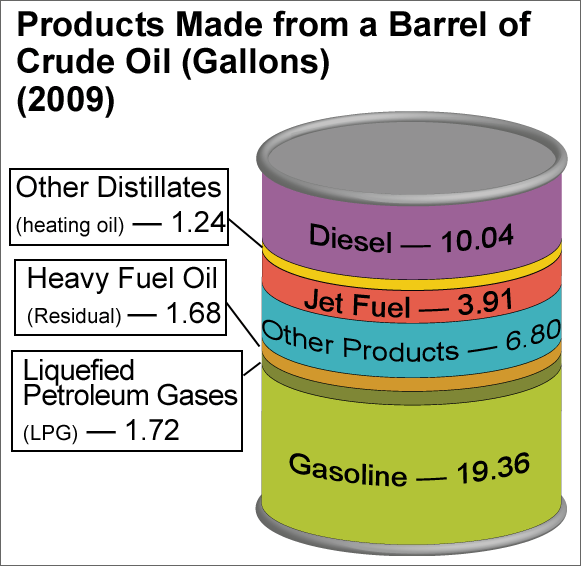
Before we can get rid of oil we must find suitable materials to make all these from.

A different way of putting it!
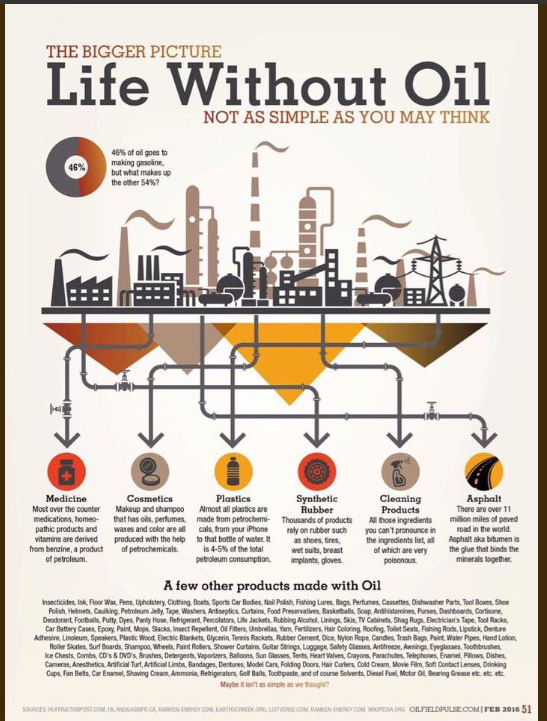
Where are we going to get all our medical equipment, drugs, fertilisers etc from?
This rather dark annotated photo of an Extinction Rebellion founder makes the point about medicine
EVs and bicycles both rely on oil in their manufacture (even the leather saddles on my bikes). Not to mention the construction for renewable energy.
Until alternatives are found AND in production we are tied to oil, whether we like it or not. This inevitably delays any stopping of oil. But if oil was simply stopped – as many of the signatories seem to think – there would be widespread hunger and famine in every continent.
Artificial fertilisers are made by capturing nitrogen from the atmosphere and by the Haber-Bosch process utilising natural gas. Nearly half the world is dependant on using artificial fertiliser, which cannot be replaced in a short timescale – however desirable. Much grain production, along with sheep and cattle, is totally dependant on artificial fertiliser. The fertiliser is to make rye grass grow for grazing and can put farmers into a viscous circle, where to stop using fertiliser and rye grass would mean bankruptcy and less food available. Though more sustainable agriculture is being developed, it will take decades not years to put into effect. The books by James Rebanks and Lee Schofield shows what is being done in the Lake District, but that is small beer. To effect immediate change is famine and death worse than Extinction Rebellion’s wildest dreams of climate chaos. The change is slow for many reasons.
There will probably a slow steady decline in oil usage unless there is a sudden breakthrough in technology. But even that would take decades.
6 Climate chaos
I think the worst case of climate chaos was in the 1310s!! Compared to that decade our present climatic woes are minor. The cause of it was probably a volcanic eruption.
However all the coverage on Climate Chaos and Climate Grief helps nobody. It can lead to having despair and no hope. It can cause stress and even mental illness and some psychologists say their research indicates that this is having an effect on the young.
To deny that there is a serious issue over the climate (and the environment in general) is both wrong and misguided, but a focus on a climate apocalypse results in despair, mental illness and inaction, though some think protests are the solution.
What is needed is HOPE in a difficult but not apocalyptic situation, so that the HOPE in the future leads to positive action starting at the personal and local level. Many more need to follow Norman Tebbit’s advice of forty years ago – On yer bike – and use the car less – and that is just for starters.
The churches should have great responsibility and encourage hope in the time of environmental concern and then suggest action. Those actions will normally be very small and local, but cumulative.
7 We already have most of the solutions we need to transition to 100% renewable energy
This statement is too naive and inaccurate. To transition to 100% renewable there must be a 24/7/365 supply of power which is not subject to intermittency AND IS AVAILABLE NOW. The only sources which can do that at present are fossil fuels and nuclear.
Hydro is sparse in the UK as our topography does not lend itself to developing as much as Switzerland or Norway. There are two pump storage sites in North Wales, and there could not be many more. There are far more in Scotland, but again environmental reasons could be limiting. However, at present, hydro produces 2.2% of UK electricity and does not have the potential of much more.
Both solar and wind energy are intermittent and if you follow Grid watch on twitter https://twitter.com/myGridGB https://twitter.com/myGridGB , you will find that solar and wind make a contribution of 0 to 70 % of electrical power at a given time. Nuclear makes up some of the shortfall with a steady 15 to 20% and then the slack of up to 80% is made up from gas power stations and imports – and even coal!
Battery storage is very expensive and limited at present and the technology needs greatly improving.
It is totally wrong to say we have most of the solutions. Assuming that the present techniques are suitable it would still take decades rather than years to implement. Battery storage would have to be increased from near zero to being able to provide power for several weeks as in a dunkelflaute. Both solar and wind must be increased several fold and so must the electric grid. None can be done in a few years by which time Rosebank would be exhausted!!
Far too much hope is put on EVs and some virtually virtue signal by being proud owners of an EV! As if that is a solution! The problem over EVs is also severe as mining experts speak out about as the minerals needed are not as plentiful as a transfer to EVs requires. Further EVs increase the demand for electricity, possibly doubling or more the demand. The demand of EVs on mineral resources is mind-boggling.
The demand gives mind-boggling figures. There are 35 million ICEs in the UK to be replaced by EV’s over the next ten to fifteen years. Then think of the numbers worldwide! To produce just the copper for British vehicles alone, you would need to mine 200 million tons of copper ore at 0.4% copper. (based on 20kg of Cu needed for each EV.) To consider only copper; a tiny copper mine is 2 million tons of ore at 2% copper. but for one EV you need 1 ton of copper ore if a rich mine of 2% copper. Many decades ago I assessed an tiny old working for potential. The minimum target was 2 million tons at 2%. That would give copper for two million EVS. In present mines you need 5 tons of ore for each EV, as the grade is much lower at 0.4% . So how much copper ore do you need for the 35 million EVS to replace ICEs in Britain alone? And then the Li, Co, Ni, graphite. This blogs deals with the problem
https://michaelroberts4004.wordpress.com/2023/09/27/why-sunaks-delay-of-banning-petrol-cars-until-2035-is-more-than-copper-bottomed/
Where is all the copper (and other minerals) going to come from? I can assure you it is a bigger headache than a headache from CO poisoning which I got while working in a copper mine. An unforgettable experience! This is a vital consideration for the practicality of transition away from oil. It was not even mentioned – but then it is not mentioned by most Christian environmentalism. Why not?
Yes, renewables and batteries are already here, but only a fraction of what is needed for a transition to 100% renewables. It is completely misleading to give the impression that it is achievable in the near future. This is a major example why Christian green groups have not understood the nature of transition and the vast amounts of new infrastructure and minerals needed.
Any equally serious problem is that nuclear energy is simply not mentioned. It ought to be as it is a cleaner energy than any other. There has long been opposition to nuclear energy especially by Greenpeace and Friends of the Earth and this is shared by many Green Christians. It is a very serious omission not to encourage nuclear energy which has been stymied and throttled by green propaganda for half a century. The silence from this letter is very telling.
Conclusion
Like the two previous letters of oil from church leaders, this letter has many deficiencies, bias and omissions. It is very one sided and only reflects a portion of Christian opinion, though their view tends to have the upper hand at present. There is little awareness of the technological challenges of going green and clean and has a dangerously optimistic view of the readiness of renewables.
They also ignored the issues of heating, eating and meeting thus ignoring the enormous costs inflicted on people along with insecurity. Too rapid a rejection of oil will have serious consequences of hunger and energy poverty. Food banks will not be able to cope.
The letter was organised by Operation Noah which has single-mindedly pushed for divestment and the ridding of fossil fuels for many years. This may explain the limited vision of the letter which ignores so many things – the need to use fossil fuels for at least a few decades, the use of fossil fuels in artificial fertilisers and many manufactured “things”, the ignoring of nuclear energy, the over-looking of the astronomical demand for minerals for “green energy”, the inevitable slow development of electric grids etc. Ignoring them them may be good rhetoric but it is not realistic – not that a pragmatic outlook is essential to avoid suffering!
In fact it is singing to the same song sheet as many green groups, including Extinction Rebellion and their exaggerations,. But then some bishops went to ER demonstrations/disruptions…….
And then Christian Climate Action;
This seems an odd way to mark Good Friday! Does it say it all?

Christian Climate Action posted this on Facebook on 20th October 2023
https://www.bristolpost.co.uk/news/bristol-news/tyres-deflated-more-100-suvs-8845965
With the only comment being the emojis 


I wonder what the owners’ felt. As much as I dislike Chelsea tractors this is not a good or wise action, and hardly in accord with the love of Christ.
I could say a lot more but the “letter” and its predecessors seem to ignore a variety of informed opinion and only go for the most extreme action without considering the results of rapid elimination of oil.
This boils down to one thing;
What can oil be replaced with if oil is got rid of in a few years?
In a ideal world we would get rid of oil yesterday, but cannot do so until there are replacements, which are not yet present. Until then, which will be several decades, we are stuck with oil.
The whole world needs look for new energy sources, a greater economy of use, mitigation (especially natural) and insulation. But that is less exciting and won’t grab the headlines like getting arrested at an ER demonstration or climbing onto a railway carriage.
What should church be doing
Apart from firstly doing its primary task, it needs to be well-informed and not partisan. If it is partisan then it will push away many, both within and without the fold.
There is a danger in polarising opinion to be utterly for or against rather than slowly encouraging people to at least a partial acceptance of the need for environmental renewal.
Just consider two examples from the hills of the north where I wander around! There is a tremendous amount of work going on which is often unnoticed. There is peat restoration galore, river repair, tree planting, leaky dams, change in sheep and cattle farming etc. I have done my bit having re-introduced sphagnum over the last ten years to a square kilometre of moorland where the old drainage channels were blocked but then no peat planted. Sphagnum is now beginning to thrive. It will slowly become a carbon store.
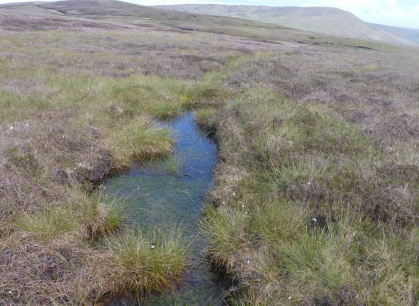

In one area of upland farms local to me there is much hedgerow repair and other things, but few notice. Many of the farmers were appreciative of the work but one was scathing. He now wants a few things done on his land. He is very much a partial convert but that is a step in the right direction. One of the things that gives me hope are people, not only farmers, who are beginning to have a green tinge!
A recent best-seller is Lee Schofield’s Wild Fell on the work on the RSPB estate at Haweswater in the Lakes. The last eagle has gone but more wildlife is coming back, and most recently a Great Egret. Not all local farmers like the RSPB work and some are antagonistic, but Lee works at it slowly and partially wins some round. More and more hill farmers are adopting the approach at Haweswater and of James Rebanks, whose English Pastoral recounts a gradual change in shepherding to the great benefit of the fells. I think Monbiot would simply retort by saying the maggots aka sheep should just go – and that is the approach of this letter. When on the fells I rejoice when I see peat restoration, tree-planting and Belted Galloway cattle.
Today all churches need to have an environmental concern with action, but that is easier said than done. I have seen churchwardens spray wildflowers with glyphosate in a churchyard for tidiness sake and elsewhere the grass is mown to bowling green standard to the exclusion of wild flowers. To move forward the church leaders need the wisdom of Solomon and great patience. But slowly things are happening despite the pressures of paying diocesan dues (parish share) and bricks and mortar. Things are changing – and ever more rapidly.
Yes it is slow, and there is urgency, but as a geologist and glaciologist, I go for the slow, inexorable approach on creation care.
